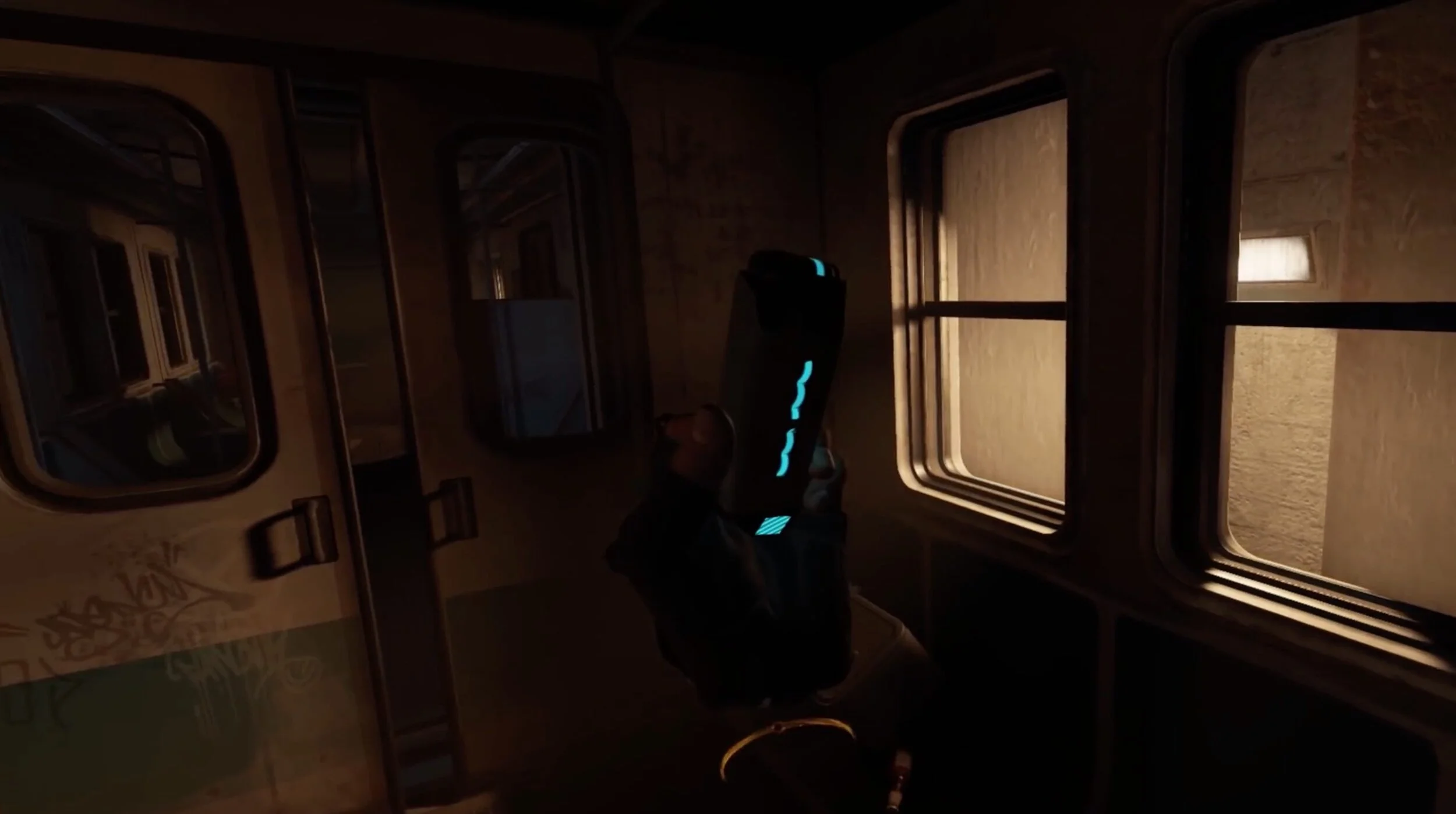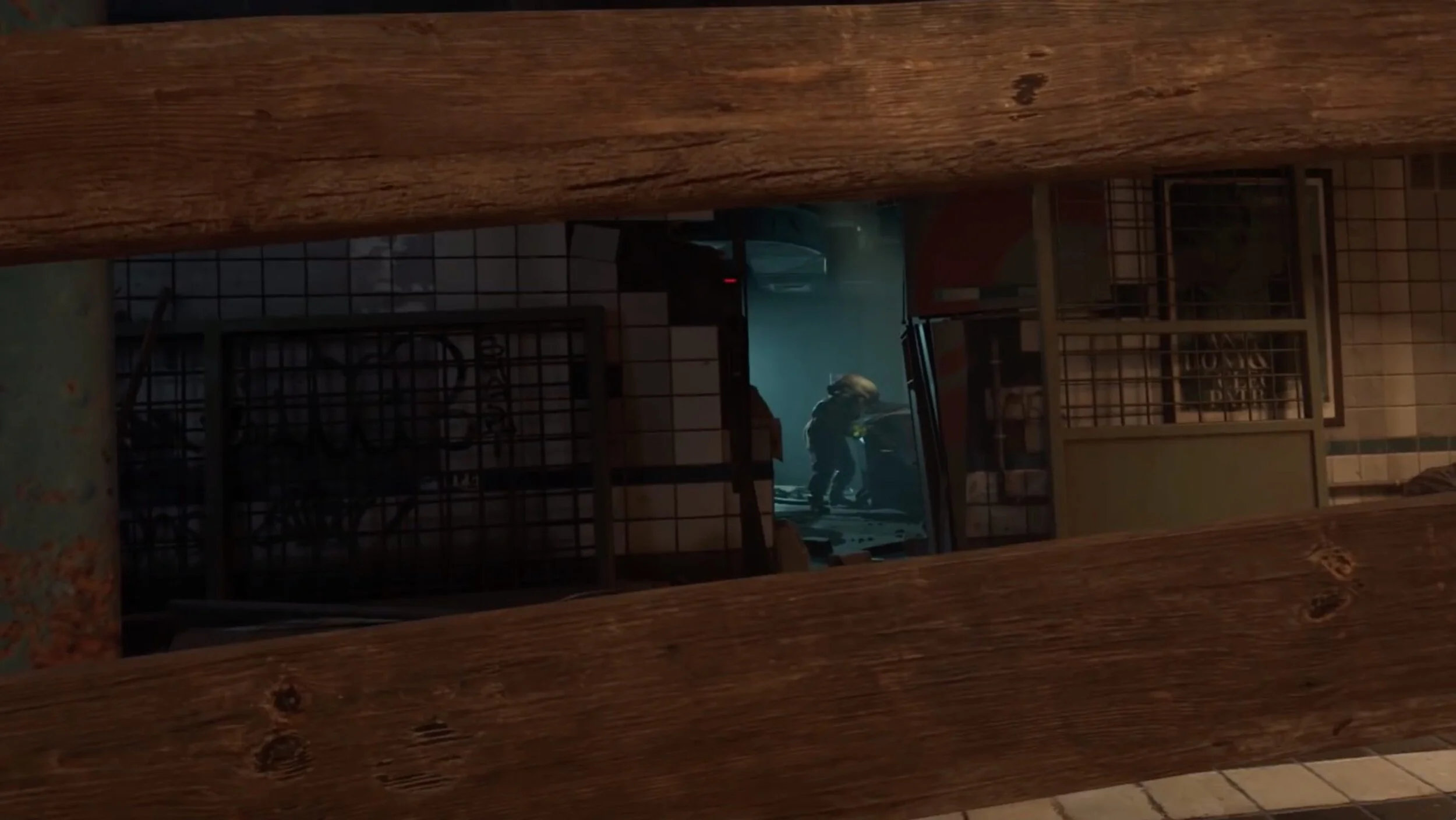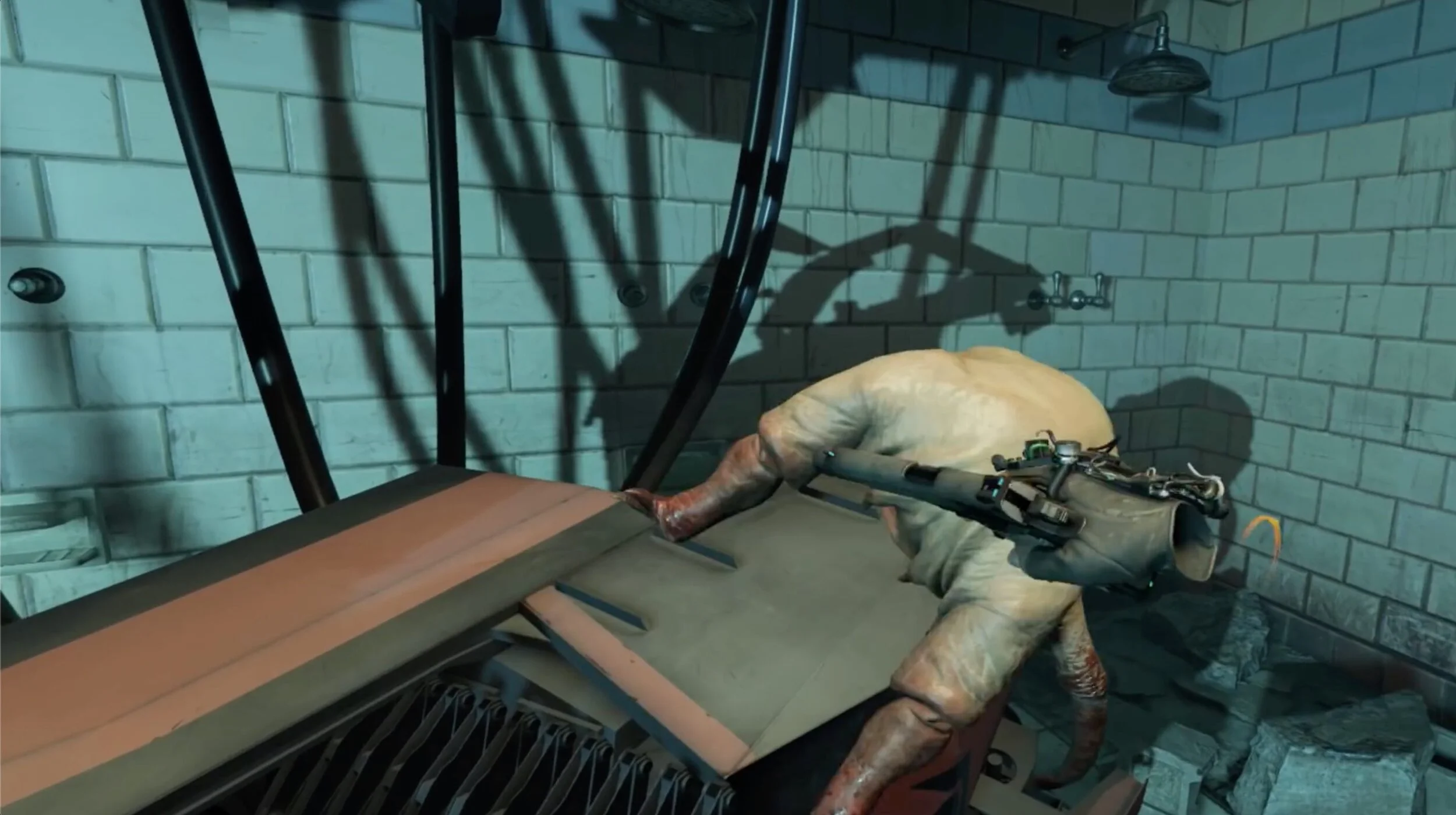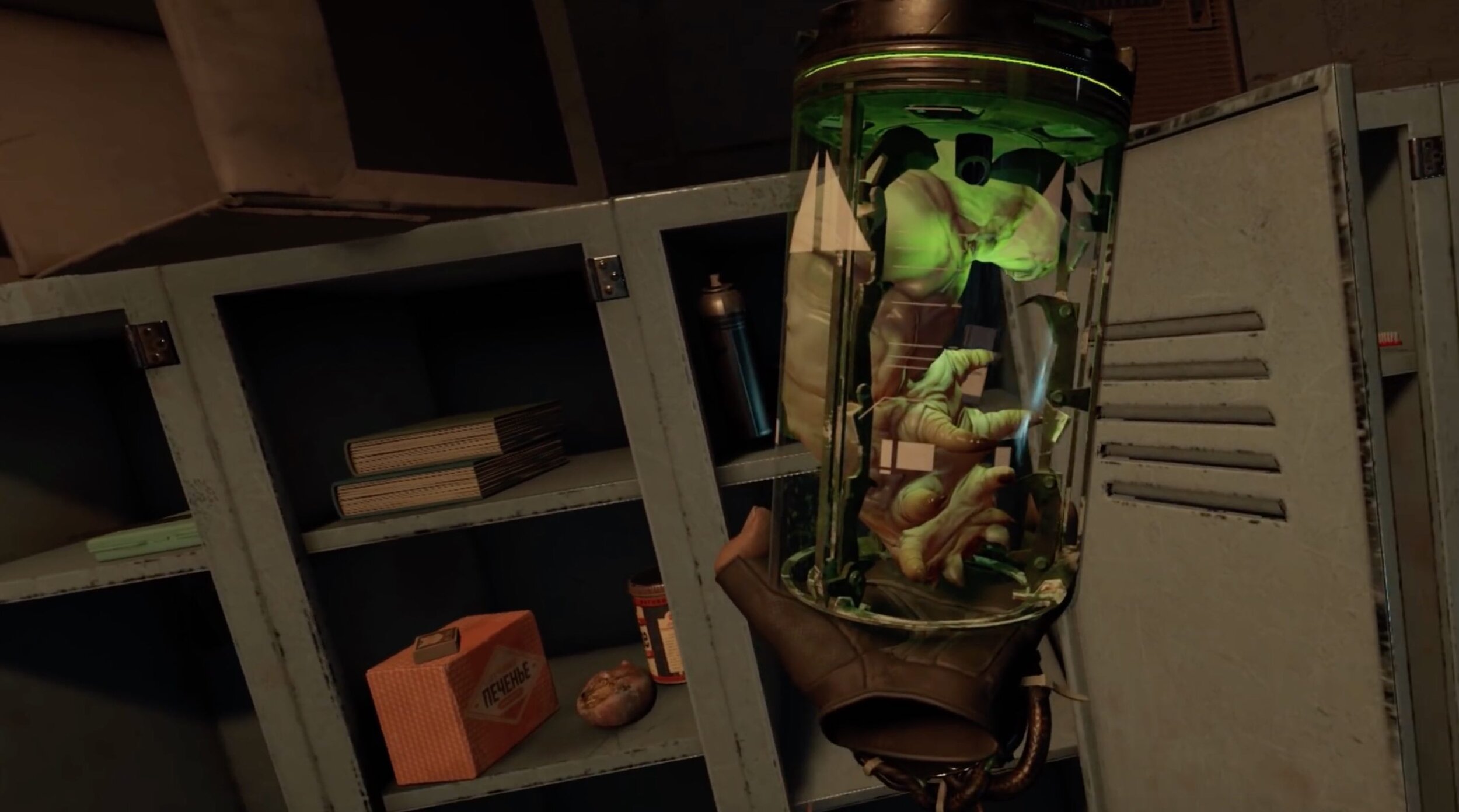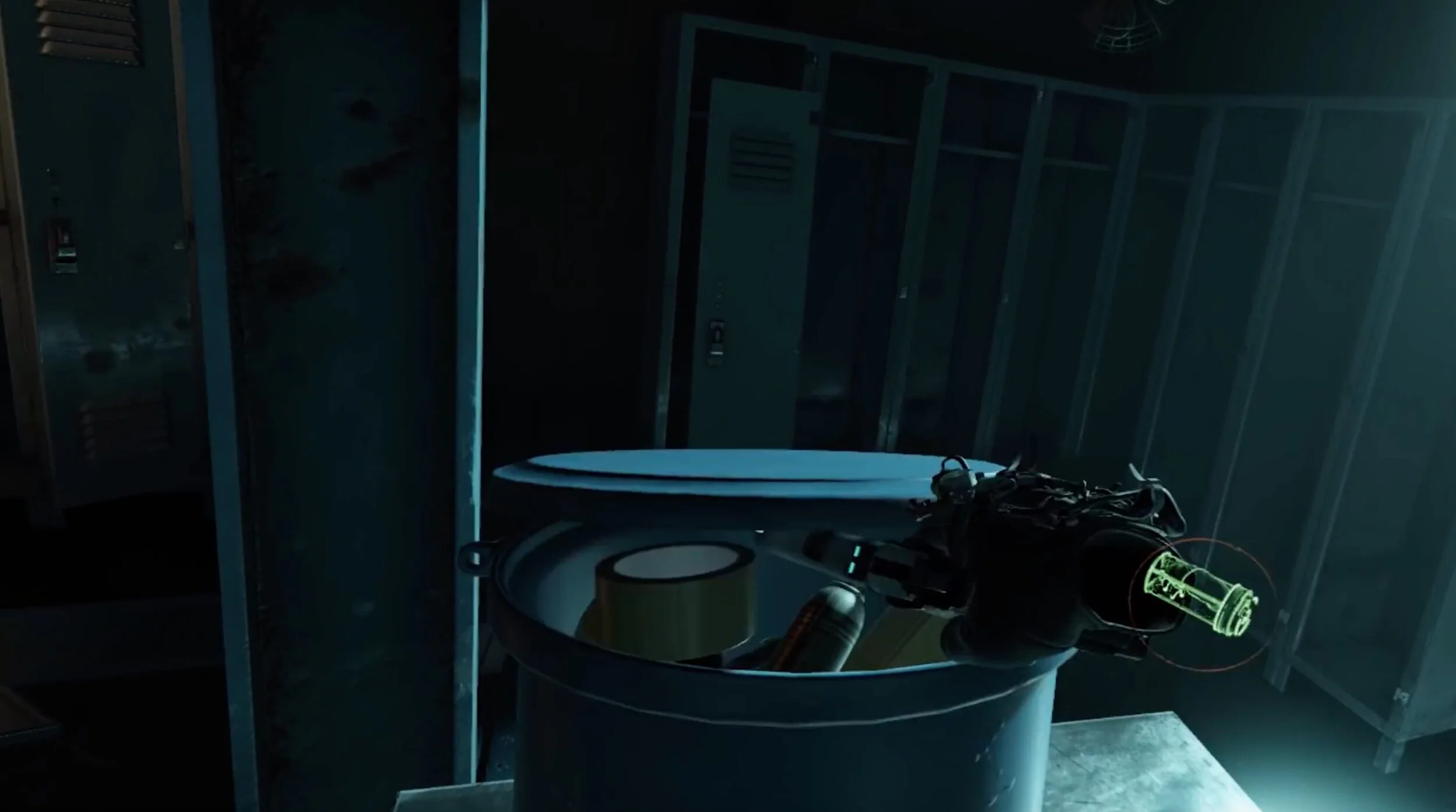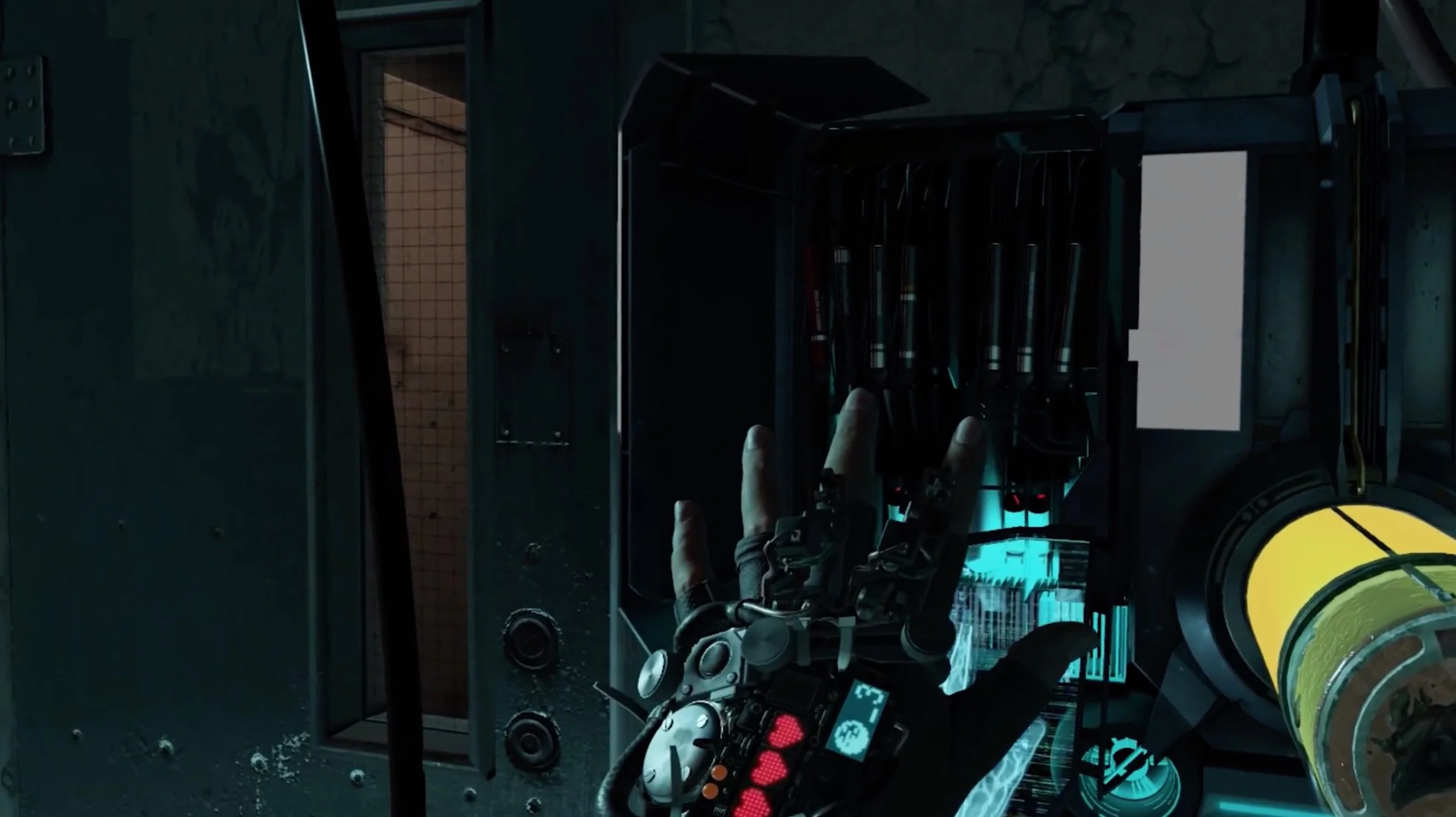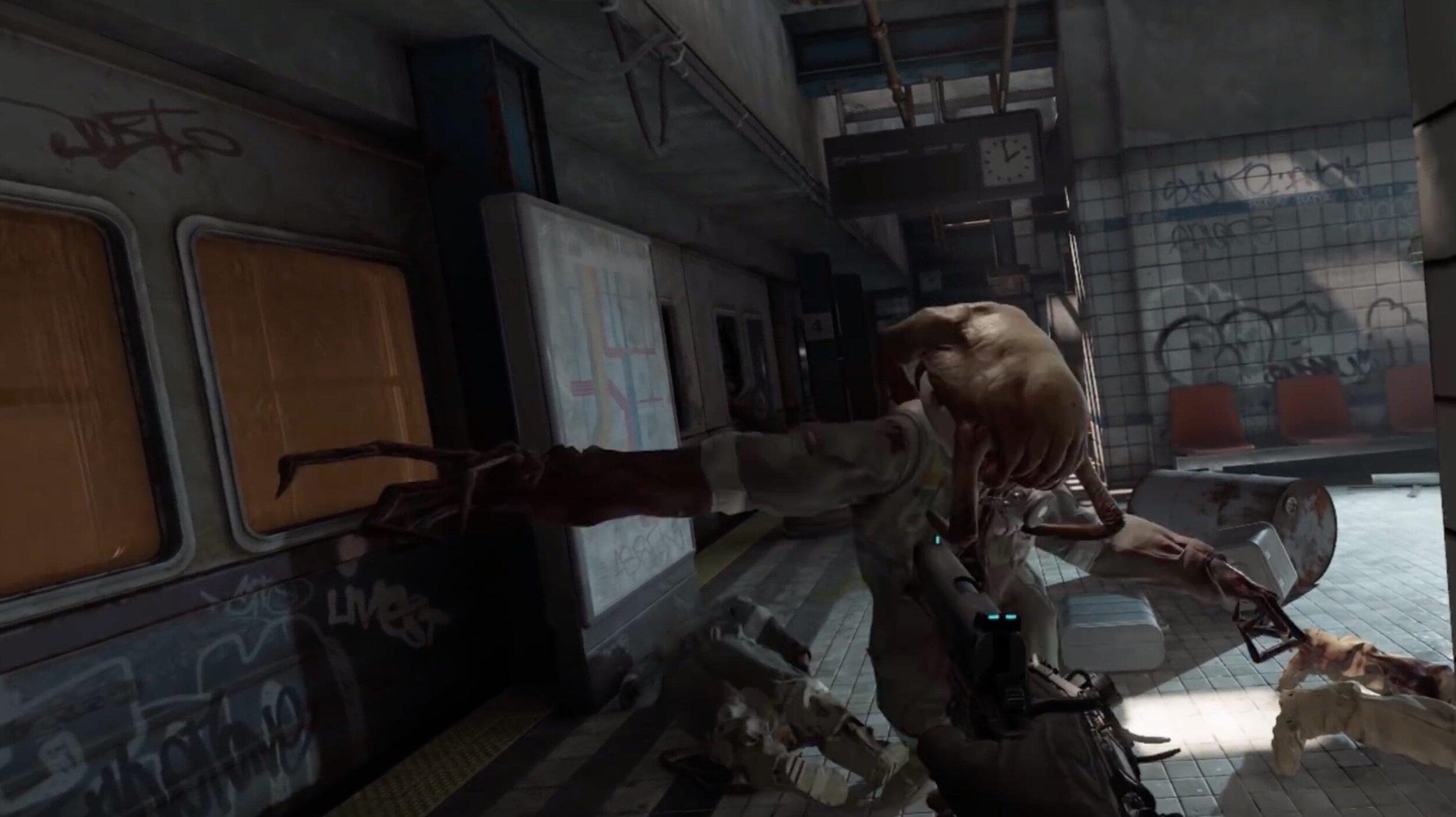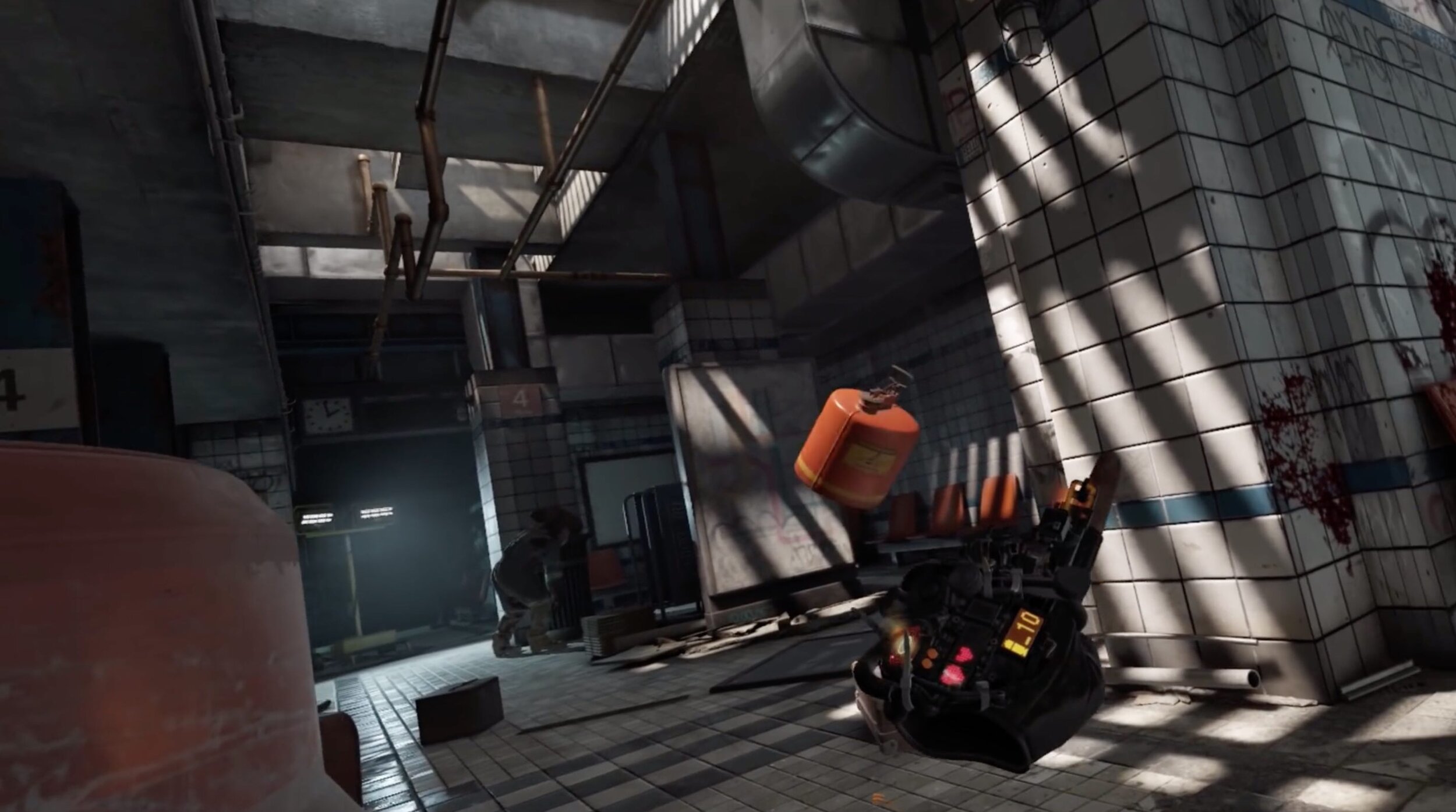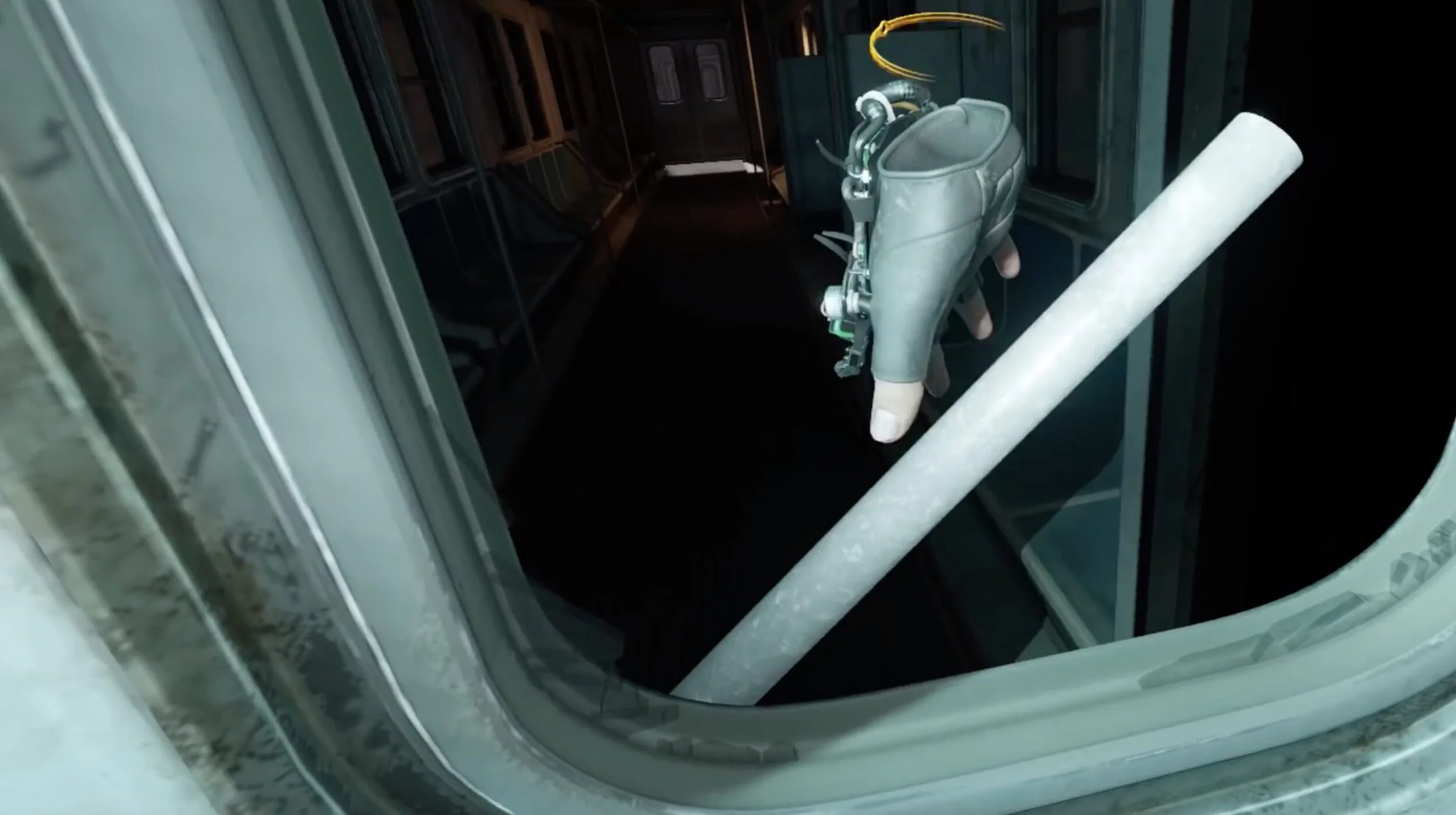Trailer Review - Half-Life: Alyx Gameplay Video 1
Today I'm taking a look at the recently released gameplay clips for Valve’s VR game Half-Life: Alyx. You might wonder: why did they release gameplay clips? Why not another trailer?
Valve has a real uphill battle selling a VR game which requires the player to spend several hundred or over a thousand dollars on computer and VR equipment to play. These gameplay clips had to show beyond a shadow of a doubt that Half-Life: Alyxwill be a unique VR experience which would not be possible if the player controlled the game via a keyboard & mouse or gamepad. Raw gameplay was the best way to showcase this, especially for the hardcore audience who is distrustful of tightly edited trailers.
I seen so many game trailer comments which say: “I just want to see gameplay!” I’ve even seen these comments in trailers which DO show gameplay like in the Half-Life: Alyx trailer I made with Valve.
People who prefer gameplay clips to trailers are also the sort who might use a trailer to find out about a game, but then watch a “let’s play” video or livestream in order to make their final buying decision.
I wasn’t involved in the creation of these Half-Life: Alyx gameplay clips, but I can see how they were designed to cater to this hardcore audience, and answer a lot of their lingering questions. If you want to get into marketing speak, the announce trailer was a “top of the funnel” video designed to build awareness and hook the audience; the gameplay videos are a new asset meant to bring people further down the funnel and closer to a buying decision.
Take a look at the first clip, and then I'll walk you through what each moment is showing, and why I think they decided to include it.
The clip starts in a train car, which is a classic Half-Life location since the first two games start in one. There's a quick look around the environment to show a zombie on the other side of the window, and a hole in the ceiling shows the verticality of the level. The look up could be there because experienced video game level designers know players typically never look upward when playing, so the simple act of looking up is somewhat novel.
Alyx uses her gravity gloves to pick up a magazine, and then stow it away in her inventory. One thing to note is how the capture artist holds the magazine in front of the camera for a short beat before stowing it away; this is them performing for the camera so each thing they do is easy for the audience to understand. Throughout the whole clip there are several moments where an extra second or two helps us ingest the information. In VR, It's especially easy in VR to develop muscle memory for certain tasks, and if they're not performed for the camera, they're either barely visible or over before the eye can see.
Playing to the camera is essential for a good gameplay clip. It should never be truly "raw" gameplay.
Side note: the glowing indicators on the bullets means the player can see how much ammo they have even when they’re in dark areas!
Alyx then walks forward and opens the subway doors using both hands. Again, this is a simple throwaway moment, but using both hands simultaneously is a feature unique to VR games. She loads her gun, and cocks it before selecting an area to move a few feet forward; in this gameplay clip they chose to showcase the teleport style of movement.
Initially, I thought it was odd for them to use the teleport movement for the first clip since "free locomotion" via a controller thumbstick looks better in capture, and it looks more like traditional video game movement. But in retrospect, I think they chose to use teleport for the first clip because comfort of use is of utmost importance (especially for new VR users) and they probably decided it's better for new users to know they can have a comfortable experience. Alienating new users and turning them off of VR entirely is a bigger risk in the grand scheme of things, especially if it's just for the sake of the more hardcore VR users who are already bought in anyway (also, the hardcore users will probably watch the second clip which DOES feature free locomotion).
The zombie in front wakes up, Alyx takes a shot, then turns left to see another zombie breaking through the window. The capture artist reacts in a surprised way by pulling their hands back before shooting the zombie while supporting their gun hand with their left. The acting is another great aspect of this capture, because even someone playing the game for the first time is not likely to pantomime surprise with their hands, but for the sake of the clip's audience they play up the surprise by acting it out. Alyx takes a few beats after the zombies are all dead; this gives the audience a moment to breathe.
Alyx teleports forward, and bends down to show the headcrabs will flop around if you push them with your hands. Physical interaction is another a key feature which distinguishes this from a non-VR game where at best you might press a button to touch things around you.
Alyx teleports ahead a couple times, and loots another magazine from a dead body. To her left is a boarded up entryway. She bends down to peer between the boards to get a better look at the zombie in the room across the hall. The free looking and crouching is something which can be done in non-VR games to a certain degree, but the granularity of the looking is unparalleled; looking between the boards is also a very natural thing a person might do in this situation, especially if they weren't very tall. The natural "do what you'd do in real life" feel of VR is also a huge selling point. The capture artist then removes the wooden boards with their hands, doing their best to act like they have the weight of real boards. In VR nothing has real weight to it, so this helps sell the reality.
In a non-VR game this look through the board would have to be matched up to the precise height of the player when they're crouched.
Alyx teleports forward again, this time taking less time to show it since we're already familiar with how that works. She look at the zombie in the room, duck around a corner to reload, then swing back around to shoot them in a weak spot which causes them to explode! The ducking around the corner isn't really necessary, but again they're playing to the situation and showing something which feels very natural, and in a non-VR game would be impractical because of the amount of button presses required to execute a move which doesn't give much benefit to the player.
The capture artist pauses to let the animation of the machine finish playing out before teleporting forward and pushing the headcrab off the machine, again showing the physical interaction possible in the game.
Pushing the headcrab here is unnecessary for the player to advance, but it’s a fun moment!
Alyx inserts the gun into the machine, look at the list of upgrades possible, and then looks up at the CG diagram of the gun. After selecting an upgrade she looks back up again to see the upgrade represented in the CG diagram. Alyx hovers over the display to see she doesn't have enough currency to purchase the upgrade. I really appreciate the simple sequence of looks here which shows us the information we need to understand how the machine works.
Alyx turns around and grab a hardhat which she puts on. This is a nice moment which is both cute, and reveals a piece of resin under the hat. This is to show how the world rewards you for exploring through every nook and cranny. Again, the capture artist performs for the audience by holding both the hat and resin for a beat before stowing them away.
After a teleport forward, she opens a locker door which falls off its hinges, and another out of which spills a grub in a capsule. She takes a good look at it before stowing it in their wrist inventory slot.
Showing off the grub for the camera.
Alyx teleports again and look at a barrel with a lid partially on. Here she sticks the barrel of her gun into the small opening to get the lid off before then dumping out its contents. This is another great moment because this level of granular interaction feels very much like something you might do in real life. Most games which have interactions of this sort tend to have either jarring animations where items disappear off screen or maybe a bespoke animation which is the same every time you pick up that same item. This one moment really drives home how much you can interact with this world like you were really there. The player is rewarded again for their searching with two more pieces of resin. The player places the barrel over a protruding part of the gun upgrade machine in another goofy little moment.
This interaction is mundane, and yet completely novel!
Alyx then looks over at the health station which prompts a short dialogue exchange between her and Russell. Alyx very deliberately inserts the capsule, opens the machine, and looks at the grub getting crushed into a gross yellow goo. She hesitantly put her hand into the machine, it does its work, and she moves her fingers after it's done. This is a nice comedic moment which also pushes some nostalgia buttons with the sound design, and show the finger movement possible with the Valve Index controllers.
The short pause before putting her hand in is a simple, but effective acting moment. The fidelity of movement in VR presents infinite acting possibilities.
Alyx then leaves, picks up another magazine and engages the zombies in the next room. Here the capture artist deliberately shoot in small bursts in order to give the zombies time to show off some of their abilities like knocking objects into Alyx, and also just clawing at her when they get close. The capture artist could've easily quickly shot them from afar, but by letting them get closer we see a little bit of the physical threat they pose, and also we can see more detail when they walk closer.
Why shoot the zombies far away when you can let them get up close where you can see all the detail in the art?
Alyx teleports forward and hides behind a barrel before grabbing a propane tank, throwing it, and exploding it in front of some more zombies; there's even a little ricochet when the tank hits the pillar in the room. I like how the capture artist took a beat to show Alyx pointing at the tank before yanking it to her; this gives a moment to see how in the game you point at objects you want to pull with the gravity gloves.
If you look closely you can see Alyx's finger is still pointed long after the tank is pulled. This helps show how the game mechanics work.
She teleports forward, takes some shots at a couple nearby zombies, but when she runs out of ammo she moves on to a subway door. She tries to open it with both hands to no avail, but then looks up, pokes her head through the broken window to see a metal bar is stuck between the handles, and then removes it to get it open. The capture artist done this without first looking through the door, but again they're doing this to show the audience that the door is stuck, and also that you can do small natural actions like you might in real life.
With the door free she throws the bar at a zombie to stagger them before opening the doors, and teleporting onward. She reloads, take a few shots behind her, and teleports forward to see a zombie prying the doors apart. She nervously takes a few shots, turns to the right to see a headcrab attack the window, and take her last shot. She pulls the trigger several times to indicate it's empty, looks around to see she's surrounded, and lastly a zombie takes a swipe at her and we cut to black.
There are so many possible "Do what you would do in real life" moments in a VR game which is designed to give players those opportunities.
This is a great gameplay clip which had a lot of thought and consideration put into it, and was executed incredibly well for the sake of its intended audience. It's four minutes long, but it flies by because of the sheer density and variety of ideas it's showcasing. Even if you took all of the gameplay ideas in this, and cut it into a shorter trailer I don't think it would have the same impact as seeing it all in one go. Again, this is because the unedited nature of "raw" gameplay is the ultimate show of confidence in the game's presentation quality.
This isn't an approach which will benefit all games, and in some cases it might even seem sort of boring to see some un-narrated gameplay which walks through a section of the game. But the sheer number of novel gameplay moments and player interactions in Half-Life: Alyx made it very appropriate, and there are still two more clips which show even more unique VR interactions.
Gameplay clips made for marketing purposes need to have each and every moment scrutinized just like with a good trailer, and it's best if there's a section of the game where myriad gameplay ideas can be shown in one go. If this was four minutes of shooting zombies, it might've gotten tiresome, but the mix of actions kept things fresh at each moment. It might even be necessary to custom build a level or modify an existing one in order to help the pace at which gameplay ideas can be shown. Just like the way I talk about trailer pacing, a one-take gameplay clip can (and should!) be designed to have an interesting pace for both ideas and energy which keeps the audience engaged. I don't know this for sure, but there are some spots in this gameplay clip where it feels like there might've been some custom moments created like the headcrab conveniently landing on top of the upgrade machine (leaving this moment to randomness would've been time laborious to say the last!).
Gameplay clips are essentially long takes or "oners" so I recommend Tony Zhou's Every Frame a Painting video about Spielberg's use of single unbroken takes, and how they tell a story.
If you're planning on releasing unedited clips of your game make sure to:
Show a wide variety of ideas.
Perform tasks quickly, or customize a level for tighter timing between actions.
Perform for the audience.
Another good place to cheat off of are E3 gameplay demonstrations. Those press shows are timed to the second, so they can't waste a single moment in their gameplay sequences. Look at those clips to see how much information they convey, and how quickly they move from one gameplay idea onto the next, and see how you can do that for your own game if you decide to release some official gameplay clips.
Good luck!

